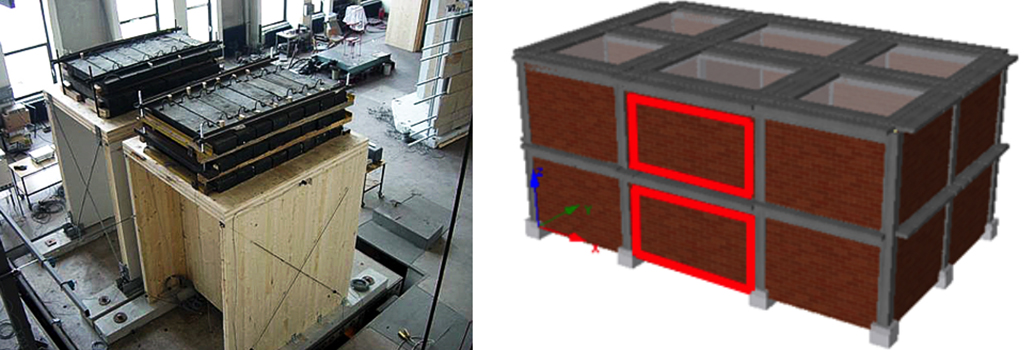Title of Project:
INfills and MASonry structures protected by deformable POLyurethanes in seismic areas (INMASPOL)
Hosting Research Infrastructure:
IZIIS
No. of Users:
11
Team Leader:
Democritus University of Thrace
Theodoros Rousakis
Team:
Istanbul Technical University
Alper Ilki
Cracow University of Technology
Arkadiusz Kwiecień
University “G. d’Annunzio” of Chieti
Alberto Viskovic
Slovenian National Building and Civil Engineering Institute (ZAG)
Miha Kramar
University of Nottingham
Bahman Ghiassi
Alma Mater Studiorum-University of Bologna
Andrea Benedetti
SIKA Poland Sp. z o.o.
Maciej Karpała
KEBE SA
Kothalis Agis
FlexAndRobust Systems Ltd
Bogusław Zając
University of Ljubljana
Matija Gams
Summary of Project:
The behaviour of rc frames with masonry wall infills is influenced a lot by the stiffness and yield displacement difference between the frame and the infill. The flexible frame is unable to carry high loads at low displacements and this can cause the infill to damage already at moderate seismic intensity. In case of aftershocks, the damaged infills can fail out-of-plane. On the other hand, if the stiff infill is too strong relative to the column, it may cause undesirable behaviour of the frame or even shear failure in the column. The response of structural system can be improved by using a flexible interface between the frame and the infill. This project proposes the testing of rc frames with a flexible joint made of polyurethane (PUFJ) with the masonry wall infills. The application of around 2 cm thick PUFJ reduces the stress concentrations at the contact and thereby reduces damage to infills and rc frames and improves the displacement capacity of the structural system. Furthermore, it offers a high amount of damping. Despite the flexibility of the polyurethane (PU), the bond between the PU and the other materials can transfer significant loads during in-plane and out-of-plane excitations. The PUFJ is versatile because different types of PU with very different stiffness, damping and strength characteristics can be used to manipulate the system dynamic behavior. In case of premature out-of-plane flexural or in-plane diagonal tension infill failure, PUs can be used for bonding of various composite fibers to the weak masonry substrate to form Fiber Reinforced PU (FRPU) as well as for repair of damaged rc frames. The PU can cover emergency situations as it cures within hours and is easy to apply. The proposed project will assess the efficiency of the method through testing of full-scale infilled rc building on shaking table. The seismic tests will validate in-plane and out-of-plane infill performance when modified, repaired or strengthened with PUFJ and FRPU systems.


